
by pestcontrolseos | Jun 11, 2025 | Blog, Pest Info & Articles
Modern homeowners are increasingly seeking pest control methods that are not only effective but also safe for their families, pets, and the environment. Traditional treatments often involve chemicals that can linger in the air or soil, posing risks to health and local ecosystems. Fortunately, eco-friendly pest control provides a sustainable alternative for managing common household pests like termites, ants, roaches, spiders, bed bugs, fleas, ticks, and rodents.
This article explores how environmentally responsible pest control works and offers insight into which methods truly make a difference in long-term home protection.
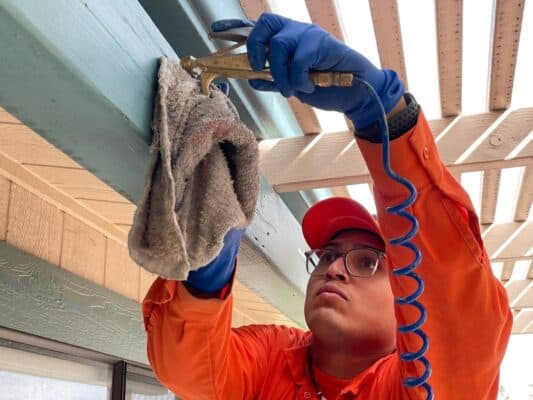
Why Eco-Friendly Pest Control Matters
Conventional pest control treatments often rely on synthetic pesticides that can build up over time and affect non-target species. For example, sprays used for roaches or ants may also harm beneficial insects or even pose low-level toxicity risks to pets and children.
Eco-friendly pest control solutions, by contrast, prioritize methods that reduce environmental impact and emphasize prevention, exclusion, and targeted treatment. These practices not only protect your home from infestations but also promote a healthier indoor and outdoor environment.
Key benefits of eco-friendly approaches include:
- Reduced chemical exposure for humans and pets
- Minimal harm to beneficial insects like pollinators
- Improved air and soil quality around your property
- Long-term effectiveness through integrated techniques
Eco-conscious homeowners increasingly recognize that sustainable living includes how we manage pests around the home.
Common Pests and Natural Prevention Techniques
Each pest type requires a different approach when it comes to eco-friendly prevention and control. Below are some common residential pests and the sustainable strategies often used to keep them at bay:
- Termites: Use physical barriers like sand or steel mesh, apply borate-treated wood, and schedule regular inspections to detect early signs of activity
- Ants: Seal entry points with silicone caulk, store food in airtight containers, and apply non-toxic repellents like diatomaceous earth along known trails
- Roaches: Keep humidity low, eliminate food crumbs, and use bait stations made from boric acid or gel formulas approved for indoor use
- Spiders: Remove clutter, vacuum webs regularly, and install screens on windows to reduce indoor entry
- Bed bugs: Encase mattresses and box springs, use heat treatment when possible, and rely on high-efficiency vacuuming and steam rather than chemicals
- Fleas and ticks: Wash pet bedding frequently, groom pets with natural repellents, and treat yards with nematodes that reduce larval populations
- Rodents: Seal cracks and gaps, store food in rodent-proof containers, and use humane traps or exclusion barriers rather than poisons
Because some pests, like termites or rodents, can cause structural damage, a professional approach is often recommended to ensure thorough and safe control. You can also pick up additional tips from these pest control hacks that work without relying on harsh treatments.
Integrated Pest Management: A Smarter, Safer Approach
One of the cornerstones of eco-friendly pest control is Integrated Pest Management (IPM). This method combines science-based assessment with practical techniques to prevent and control pests at every stage of their lifecycle.
Key elements of IPM include:
- Monitoring and Identification: Identifying the specific pest allows for targeted treatment, reducing unnecessary chemical use
- Prevention: Structural modifications like sealing entry points, installing screens, and correcting moisture problems reduce the chance of infestations
- Control Methods: When treatment is necessary, IPM favors traps, natural repellents, or low-toxicity products applied only where needed
- Evaluation and Follow-Up: Ongoing monitoring ensures that treatments remain effective and adjustments are made as needed
IPM is especially useful for managing termites, ants, and rodents, as it addresses both the immediate problem and the environmental factors that support pest activity. Regular inspections are critical, especially for wood-damaging pests. For California homeowners, understanding why termite inspections matter is key to avoiding long-term damage.
What to Avoid with DIY “Natural” Solutions
While eco-friendly pest control may sound simple, not all homemade or “green” remedies are truly effective or safe. Using essential oils or vinegar sprays without understanding proper concentrations can have limited results. Likewise, placing ultrasonic devices around the house may not actually deter pests like rodents or roaches.
Additionally, DIY treatments often treat only surface-level symptoms without addressing nests or breeding grounds. This can lead to reinfestation, wasted time, and even exposure to allergens or contaminants stirred up by improper handling.
When considering natural or low-impact options, it’s important to work with professionals who understand how to balance effectiveness with sustainability. They can provide detailed assessments, use targeted methods, and ensure that eco-friendly solutions are applied in a way that actually works for your home.
Making Eco-Friendly Pest Control Work for You
Eco-friendly pest control is not a one-size-fits-all solution. It depends on your home’s layout, the types of pests present, and the unique challenges of your local environment. While some homeowners may get by with preventive maintenance and minor treatments, others, especially those with recurring infestations or termite activity, will benefit from a customized, expert-guided plan.
Look for services that offer:
- In-depth home evaluations before treatment
- Emphasis on prevention and structural corrections
- Low-toxicity products and precise applications
- Follow-up support to ensure long-term success
Partnering with the right pest control provider allows you to keep your home pest-free without compromising on health or sustainability.
Make the Greener Choice for Your Home
A safe home shouldn’t come at the expense of the environment. Eco-friendly pest control empowers homeowners to manage pests in a responsible, sustainable way. By identifying pests early, using smart prevention techniques, and turning to trained experts when needed, you protect not only your home but also the world around it.
For personalized guidance and safe, eco-conscious pest control, reach out to Dr. Termites today and take the first step toward a healthier, pest-free home.
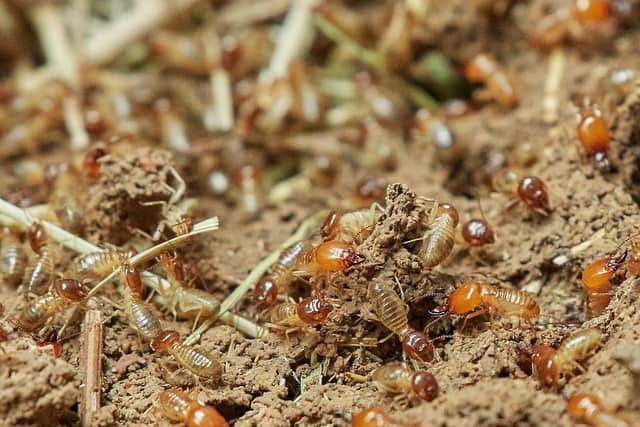
by pestcontrolseos | Jun 5, 2025 | Blog, Dr Termites News & Recent Events
California’s warm climate and varied terrain make it one of the most termite-prone regions in the country. Both drywood and subterranean termites are commonly found in residential areas, quietly damaging structures from the inside out. A termite inspection is one of the most important preventive measures homeowners can take to protect their investment. Regular inspections allow for early detection and timely action before significant damage occurs. Here’s why inspections are so critical and what you should know as a homeowner in California.
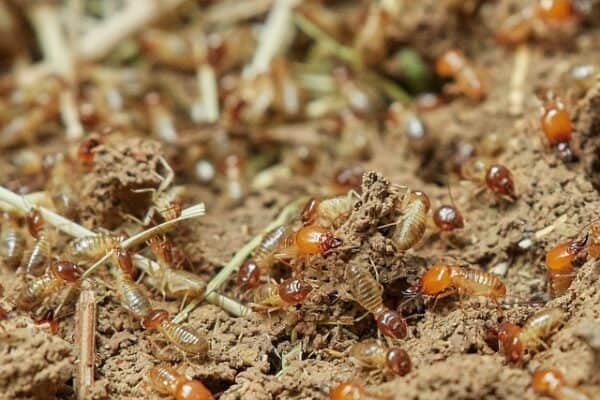
Why Termite Inspections Are Crucial in California
Termites are often referred to as silent destroyers because they can go unnoticed for years while damaging the structural integrity of a home. Unlike pests that leave behind obvious messes, termites work in hidden spaces like wall voids, subfloors, and attics. By the time the signs of infestation are visible, the damage is usually extensive.
In California, the combination of moderate temperatures and periodic moisture makes homes particularly vulnerable. Many properties have features that invite termite activity, such as wooden siding, decks, or crawl spaces with poor ventilation. A scheduled termite inspection allows trained professionals to assess risk areas and identify early activity that would be otherwise missed.
Warning Signs That May Indicate Termite Activity
Although termites tend to avoid detection, certain signs may point to their presence. Being aware of these early indicators can help you take timely action and avoid costly repairs.
Common signs include:
- Mud tubes near the foundation, especially in crawlspaces or basements
- Discarded wings around doors, windows, or other light sources
- Wood that sounds hollow when tapped
- Small piles of frass, which resemble sawdust and are typically found near wooden surfaces
- Bubbling or uneven paint that may suggest moisture buildup from termite activity
These symptoms should never be ignored. If you observe more than one, a professional evaluation is recommended. To better understand the consequences of infestation, review the detailed insights on the impact of termite damage on property value.
What to Expect During a Professional Termite Inspection
A thorough termite inspection involves a detailed check of both the interior and exterior of the home. It is designed to identify current infestations, signs of past activity, and structural vulnerabilities.
Here is what typically happens during an inspection:
- The inspector checks exterior features such as foundations, siding, and crawl spaces
- Interior areas like baseboards, window sills, and attic spaces are examined for visual signs of damage or droppings
- Tools may be used to detect moisture in walls or wood, as termites are drawn to damp areas
- Any wood-to-soil contact is noted as a potential risk
- The inspector provides a detailed report, including findings and recommended next steps
The inspection is non-invasive and usually completed in one to two hours, depending on the size and layout of the property.
How Regular Inspections Help Prevent Costly Repairs
Many termite infestations go undetected until the damage becomes extensive. Structural wood, support beams, and flooring can all be compromised without any visible signs on the surface. By the time repairs are needed, homeowners often face bills in the thousands. In some cases, termite damage can also affect the overall livability and safety of the home.
A consistent inspection schedule helps identify problems early. When termites are caught during the initial stages of activity, treatment is more targeted, less invasive, and significantly more affordable. Inspections also serve as a safeguard during home sales, as most buyers will require proof of termite control before finalizing a purchase. Some homeowners may also find value in supplemental ideas, such as these pest control hacks, to support long-term protection.
When and How Often You Should Schedule Termite Inspections
How often you should schedule a termite inspection depends on your home’s age, location, and past pest history. However, annual inspections are recommended for most California homes. If your home is in a high-risk area or has experienced termite activity before, a biannual schedule may be more appropriate.
The best times to schedule inspections include:
- After heavy rain, which may increase subterranean termite activity
- Before listing a home on the market or purchasing a new property
- Following home renovations, which may disrupt previously sealed areas
- If signs of termite activity are spotted, such as mud tubes or discarded wings
A consistent inspection schedule reduces the risk of hidden damage and gives homeowners peace of mind throughout the year.
Take the First Step Toward Peace of Mind
Your home is one of your most valuable investments, and protecting it starts with knowing what’s happening behind the walls. Whether you’re due for your annual termite inspection or you’ve spotted signs that raise concern, acting early can save you from extensive damage and costly repairs down the line. For trusted, professional support tailored to California homes, reach out to Dr. Termites and schedule a thorough inspection today.

by pestcontrolseos | May 29, 2025 | Blog, Pest Info & Articles
As more homeowners explore less invasive and environmentally conscious pest control methods, orange oil has emerged as a powerful tool, particularly for targeting drywood termites. Extracted from orange peels, this essential oil contains d-limonene, a naturally occurring compound that’s proven deadly to termites on contact. Its localized, precise application makes it especially appealing to those who prefer solutions with minimal disruption to their daily lives. When professionally applied, orange oil can address active infestations while maintaining the structural integrity of your home.

How Orange Oil Works Against Pests
Orange oil’s effectiveness lies in its active compound: d-limonene. This citrus-derived chemical dissolves the waxy outer layers of insect respiratory systems, leading to suffocation and death shortly after contact. For drywood termites that live and feed deep within wooden beams, this type of treatment penetrates the infested area directly without requiring tenting or large-scale evacuation.
It is particularly well-suited for drywood termites because they nest within wood itself, without needing contact with soil. This means infestations often remain hidden, affecting structural elements silently until significant damage occurs. Orange oil allows pest professionals to inject treatment directly into known colonies, reducing collateral impact on non-infested areas.
For properties in Southern California where hidden signs of termites often go unnoticed, orange oil provides a precise way to treat the problem before it escalates.
Key Benefits of Orange Oil in Pest Control
When compared to conventional pest control methods like fumigation or chemical sprays, orange oil offers several distinct advantages. These benefits are particularly important for residential environments, sensitive occupants, or structures requiring minimal intrusion.
- Localized Treatment: Orange oil targets only the areas where termites are active, preserving unaffected wood and reducing unnecessary exposure.
- No Move-Out Required: In most cases, occupants can stay in the home during treatment. There is no need to bag food, relocate pets, or vacate for days.
- Safe for People and Pets: When applied by a trained technician, orange oil poses little to no risk for non-target organisms inside the home.
- Eco-Friendly Composition: Derived from natural citrus peels, orange oil breaks down quickly in the environment and aligns with green treatment philosophies.
- Minimal Property Disruption: The absence of tenting or structural drilling makes it a discreet, fast solution, particularly appealing for historic homes or furnished spaces.
Although not a universal solution for every infestation, it has become a go-to method for treating early-stage or localized termite activity with less interruption.
Ideal Scenarios for Orange Oil Use
Orange oil is most effective when termite activity is contained and accessible. This makes it ideal for early infestations, isolated colonies, or treatments involving visible or exposed wood structures. Its application is especially valuable in scenarios where structural integrity and resident comfort are top priorities.
However, it’s important to understand that orange oil is not suitable for all pest control needs. Widespread or concealed infestations may require more extensive treatment strategies, including whole-structure fumigation or a combination of targeted approaches. An expert inspection will determine the extent of the issue and whether orange oil is the most appropriate course of action.
Historic homes, sensitive commercial properties, and residences with vulnerable occupants are often great candidates due to the non-invasive nature of the treatment.
Common Misconceptions About Orange Oil
Despite its growing popularity, there are still several myths surrounding orange oil’s capabilities. One of the most common is that it’s a cure-all for every pest. While it’s exceptionally effective for drywood termites, its use for other pest types is more limited. For homeowners curious about its broader applications, this article on orange oil for other pests offers helpful context about its scope and limitations.
Another widespread misunderstanding is that orange oil can be used as a DIY remedy. Although d-limonene is found in some household cleaners, these products lack the concentration and application method needed to penetrate termite galleries effectively. True orange oil pest control relies on professional-grade formulations and tools that reach deep within structural wood, often beyond the surface level.
It’s also important to note that while orange oil smells pleasant and appears harmless, improper use can result in incomplete treatment or reinfestation. That’s why involving a professional technician is essential to ensure proper dosing, placement, and long-term success.
Why Expert Application Is Essential
The success of orange oil treatment depends heavily on precision. Technicians use advanced tools like moisture meters, borescopes, and infrared imaging to locate termite colonies and determine the best injection points. Without this expertise, infestations can remain partially untreated, leading to ongoing damage and recurring problems.
Professional-grade orange oil treatments are also more concentrated and carefully controlled. They allow deep penetration into wooden structures, reaching galleries where termites live and reproduce. When applied strategically, orange oil eliminates colonies without affecting the entire property or posing risks to residents.
Moreover, pest control professionals can monitor and reassess treated areas over time to ensure the problem does not return. This kind of follow-up support is critical in protecting your investment and maintaining the integrity of your property.
Partnering with Dr. Termites
Don’t leave termite damage to guesswork. To schedule a thorough inspection or to learn more about how orange oil fits into a long-term pest control strategy, reach out to Dr. Termites. Our experienced team is ready to help you make the most informed decision for your home.
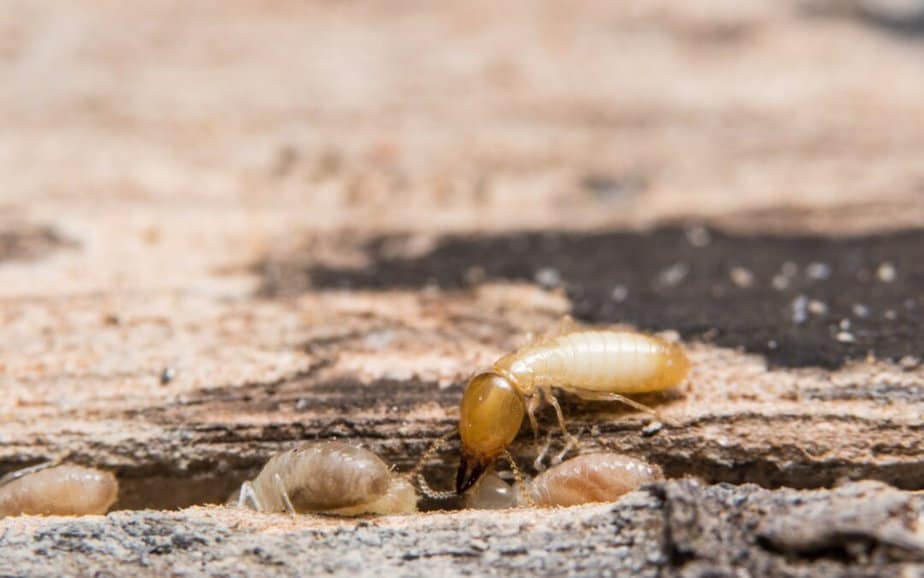
by pestcontrolseos | May 22, 2025 | Blog, Pest Info & Articles
Termites are among the most destructive pests homeowners can encounter. What makes them particularly dangerous is that their activity is often hidden from view. These pests feed on wood from the inside out, slowly weakening a home’s structural integrity without immediate warning signs. That is why scheduling an annual termite inspection is not just a good idea but a crucial step in responsible home maintenance.
Many infestations develop over time without any visible signs. By the time you notice warping or hollow-sounding wood, extensive damage may have already occurred. An annual inspection gives professionals the chance to detect early signs of activity, prevent future damage, and safeguard your investment before problems worsen.
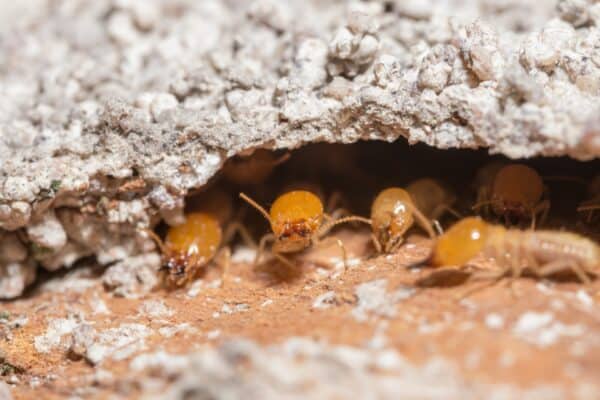
Why Annual Termite Inspections Are Critical
Termite colonies can remain active and undetected for months or even years. Because these pests live inside walls, beneath flooring, and around the foundation, they often cause damage long before being discovered. Waiting for visible signs usually means repairs will be costly.
Scheduling a yearly termite inspection ensures that any early activity or structural vulnerabilities are identified quickly. Professionals look for subtle indicators such as mud tubes, wood damage, and moisture conditions that could attract termites. In many cases, they can catch infestations before any serious damage is done.
Inspections are especially important if your home has a history of termite activity. Even after treatment, colonies can return if conditions are favorable. If you are in the process of buying a home, understanding the benefits of pre-purchase inspections is just as important. These evaluations can reveal hidden damage or active infestations that might otherwise go unnoticed.
Signs That You Should Schedule an Inspection
Even if your home has not had problems in the past, certain signs may indicate that a termite inspection is overdue. These warning signs can appear suddenly and should never be ignored.
- Mud tubes on walls or around the foundation
- Discarded termite wings near windows or doors
- Soft, hollow-sounding wood when tapped
- Buckling or bubbling paint with no clear water source
- Sawdust-like droppings known as frass
- Stiff doors or windows due to warped frames
These symptoms may seem minor, but they often point to hidden structural issues caused by active termites. Early intervention can prevent the problem from spreading and save you thousands in repairs.
What to Expect During a Professional Termite Inspection
A professional termite inspection is a thorough yet non-invasive process that focuses on identifying signs of current or previous termite activity. While each inspection may vary slightly depending on the property, the following steps are generally included:
- Interior and exterior examination, including baseboards, crawl spaces, and attics
- Focus on areas with wood-to-soil contact or poor ventilation
- Use of specialized tools to detect hollow wood or moisture buildup
- Inspection of the foundation and wooden structures for mud tubes or frass
- Documentation of any findings and detailed recommendations
If evidence of termites is discovered, the inspector will outline the next steps. To better understand the treatment journey, this guide to the termite treatment process offers a step-by-step look at what to expect after detection.
Steps You Can Take to Support Prevention
While professional inspections are essential, there are actions homeowners can take throughout the year to reduce the risk of an infestation. These measures support inspection efforts and help maintain a less hospitable environment for termites.
- Address any moisture issues by fixing leaks and improving ventilation
- Maintain gutters and downspouts to prevent pooling water near the foundation
- Keep firewood, lumber, or mulch stored away from the home
- Seal cracks or gaps in the foundation and exterior walls
- Avoid direct wood-to-soil contact in landscaping and construction
- Use treated wood for decks, fences, and outdoor structures
These practices, when combined with professional oversight, reduce the likelihood of termite activity and help maintain your home’s structural health.
The Wrap Up
There are many situations where a do-it-yourself approach will not be enough. Termite infestations often extend beyond what can be seen on the surface, and incorrect assumptions or treatment methods can allow the colony to persist. A professional understands the behavior and biology of termites and has the tools to assess the situation thoroughly.
If your home has never been inspected, is located in a high-risk area, or has experienced previous infestations, now is the time to establish a recurring inspection plan. Professionals can provide expert insight, implement customized treatment when necessary, and offer long-term monitoring for continued protection.
Termites can be quiet but costly intruders. An annual termite inspection is a small step that offers powerful protection for your home, your wallet, and your peace of mind. If you are ready to take that step or want to learn more about your options, contact Dr. Termites for a detailed evaluation and guidance from professionals who understand what it takes to keep your home secure.
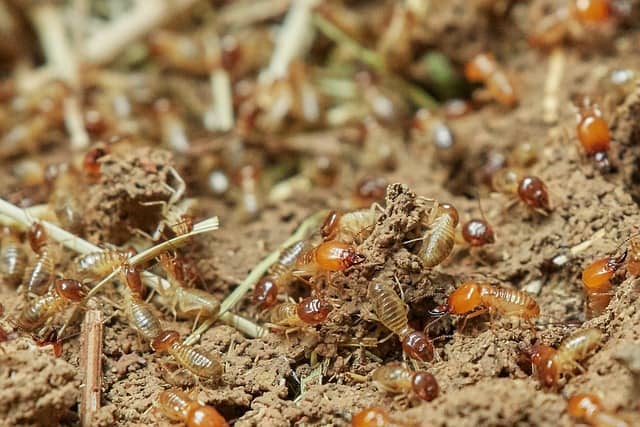
by pestcontrolseos | May 16, 2025 | Blog, Pest Info & Articles
Termites are often called “silent destroyers” for good reason. These small insects can quietly cause extensive damage to the structural integrity of your home, often going unnoticed until the repairs are significant and costly. But beyond the immediate physical destruction, termite damage can have lasting consequences for your home’s market value, making it more difficult to sell, refinance, or insure.
Understanding how termite activity affects long-term value is essential for homeowners looking to protect their investment. In this article, we outline the financial and structural consequences of termite infestations and explain why timely action and expert guidance are crucial.

How Termite Damage Devalues Your Property
When termites infiltrate a home, they feed on wood and other cellulose-based materials that support the building’s framework. Over time, this destruction weakens floors, walls, and ceilings. Even if the damage is repaired, the home’s history of infestation can significantly reduce buyer interest.
Buyers are more cautious about properties with a termite history due to:
- Concerns about future infestations
- Doubts about the thoroughness of past treatments
- Potential structural weaknesses
- Higher ongoing maintenance costs
Homes with untreated or poorly managed termite issues can lose up to 20% of their value, particularly if major structural repairs are needed. A compromised home inspection can also derail a sale or drive down the final offer.
Common Areas Prone to Long-Term Damage
Some areas of the home are more vulnerable to sustained termite damage than others. These spots often become the starting points for deeper infestation and long-term value loss.
- Basements and crawl spaces: These humid, enclosed areas offer ideal conditions for subterranean termites and are difficult to inspect without professional equipment.
- Attics and roof structures: Termites can enter through vents or gaps and target exposed beams or insulation.
- Wall voids and framing: Internal woodwork is frequently hidden from view, allowing damage to accumulate undetected.
- Floors and subflooring: As termites eat away at the support systems, flooring may warp or sag over time.
- Windows and door frames: These can become misaligned as the structure shifts from internal damage.
Persistent infestations in these areas often require not only pest removal but major renovations, adding to long-term financial strain.
Impact on Insurance and Financing
Most homeowners assume that termite damage would be covered by insurance, but that’s rarely the case. Because infestations are considered preventable with routine maintenance, insurance providers typically exclude termite-related claims.
This lack of coverage means:
- Homeowners bear full responsibility for repairs
- Buyers may struggle to secure financing for homes with existing damage
- Appraisers may assign lower values, especially if structural issues are visible
For buyers, lenders often require a clear termite inspection report before approving a mortgage. Any red flags during this stage can stall the process or require costly remediation before a deal moves forward.
Termite Damage and the Resale Process
Selling a home that has experienced termite damage comes with unique challenges. Disclosure laws in many states require sellers to report any known pest issues. If repairs were made, documentation must be provided. Even then, a buyer may request additional inspections or negotiate a reduced price to account for perceived risks.
Key ways termite damage affects resale:
- Increases the time a property sits on the market
- Lowers the pool of interested buyers
- Decreases buyer confidence during negotiations
- May lead to mandatory repairs before listing
For those planning to sell in the future, it’s smart to address any concerns now and implement proactive pest control measures. Understanding how to protect your home from termites before buying is just as important when selling.
Long-Term Prevention Measures That Protect Value
Preventing termite infestations is the most effective way to maintain a home’s value. This involves a mix of maintenance practices and professional inspections.
- Moisture control: Repair leaks and use dehumidifiers in basements or crawl spaces to make the environment less attractive to termites.
- Wood management: Avoid storing firewood near the foundation, and remove dead trees or stumps from your yard.
- Barrier treatments: Professional-grade soil treatments or bait systems can intercept termites before they reach your home.
- Seasonal readiness: Monitor high-risk periods, especially spring, when termites swarm to start new colonies. Learning how to handle termite swarms can help you prepare during this critical season.
- Routine inspections: Have your home professionally checked at least once a year to catch activity early.
A consistent prevention strategy limits the potential for damage and preserves your property’s integrity and resale value over time.
When to Call for Professional Help
While some signs of termite damage may be visible, much of it occurs where homeowners can’t easily access or recognize the problem. DIY methods often fall short of fully eradicating colonies or addressing the root causes.
Professionals use tools like moisture meters, infrared technology, and thorough crawl space assessments to locate and eliminate infestations. Their expertise also ensures that any treatments meet local standards and provide long-term protection. In cases where termite history already exists, a formal inspection and treatment record from a professional can reassure future buyers and lenders.
Conclusion
Termite damage doesn’t just affect the structure of your home, it can deeply impact its market value, resale timeline, and financial stability. Early detection, consistent prevention, and professional oversight are essential to protect what is likely your most valuable asset.
If you suspect termites or want to safeguard your property’s future, contact Dr. Termites for a thorough inspection and expert guidance tailored to your home’s needs.
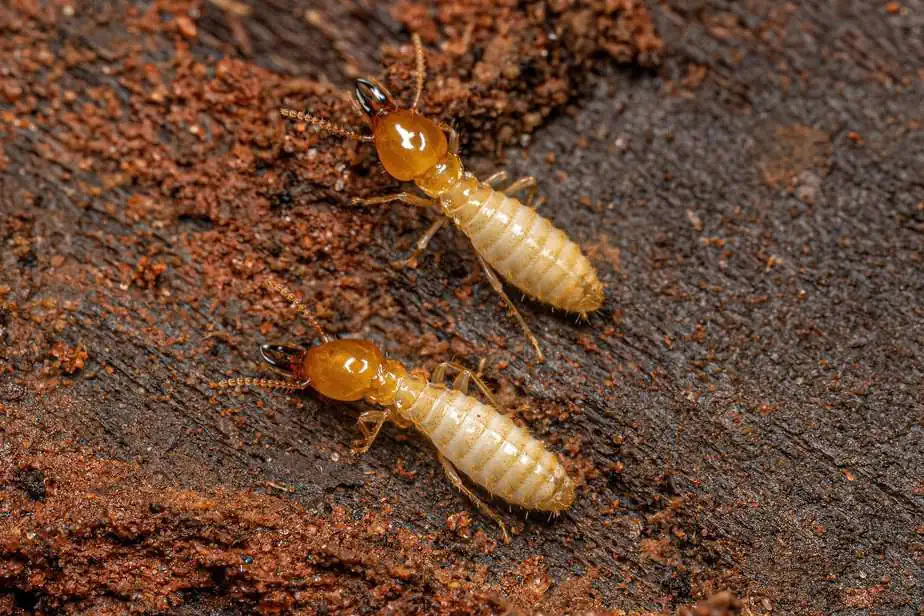
by pestcontrolseos | May 8, 2025 | Blog, Pest Info & Articles
Termites are among the most damaging pests homeowners can face, particularly in a region like Southern California, where the warm, mild climate creates ideal conditions for them to thrive. Effective termite prevention is critical, not just to protect the value of your home, but to preserve its safety and structure for years to come.
In this guide, we’ll walk you through the most important preventative measures every Southern California homeowner should know, along with practical advice on when to turn to the experts for help.
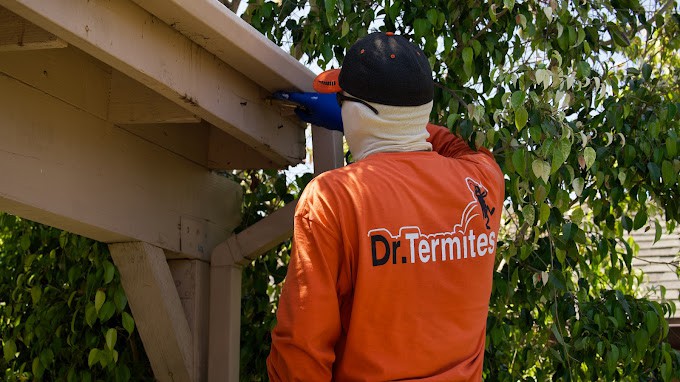
Understanding the Termite Threat
In Southern California, homeowners mainly face three types of termites: subterranean, drywood, and dampwood termites.
Subterranean termites are the most destructive, building underground colonies and mud tubes to access wood in homes. Drywood termites live inside dry wooden structures, such as attic beams or furniture, without needing soil contact. Dampwood termites prefer moisture-damaged wood, though they are less common in homes.
Knowing which termite species you’re dealing with matters because each requires a slightly different prevention approach. While some early signs are visible, most infestations go unnoticed until significant damage has occurred, making prevention your first line of defense. In fact, there are many benefits to addressing these risks before you buy a home, especially in high-risk areas.
Keep Moisture Under Control
Moisture is one of the biggest termite attractants. Subterranean and dampwood termites, in particular, are drawn to damp environments, which can lead to infestations in crawl spaces, basements, or around leaking plumbing.
To reduce moisture problems:
- Fix leaky pipes, faucets, and irrigation systems as soon as they’re noticed.
- Ensure your gutters and downspouts are clear and channel water away from the foundation.
- Improve ventilation in crawl spaces and attics to reduce humidity levels.
- Use dehumidifiers in basements or other moisture-prone areas.
By keeping your home dry and well-ventilated, you dramatically reduce the likelihood of termite activity.
Limit Wood-to-Soil Contact
One of the most practical steps you can take for termite prevention is minimizing or eliminating wood-to-soil contact around your home. Termites often use these connections as bridges into homes.
Some key measures include:
- Keeping wooden siding, trim, or posts at least six inches above ground level.
- Using concrete or metal bases for decks, fences, or steps instead of embedding wooden posts directly into the soil.
- Storing firewood, lumber, and cardboard at least 20 feet from the house and off the ground.
- Replacing wood mulch with less attractive alternatives like gravel or stone near the foundation.
Reducing these access points makes it much harder for termites to reach your home.
Conduct Regular Inspections
A proactive inspection routine is one of the simplest yet most effective termite prevention tools. We recommend walking around your home at least twice a year to check for suspicious signs.
Look for mud tubes on walls or foundations, discarded termite wings near windowsills, blistered or peeling paint, hollow-sounding wood, or buckling floors. Pay extra attention to basements, attics, and crawl spaces.
If you spot anything unusual, it’s wise to contact a pest professional immediately. Regular inspections help catch small problems before they escalate into expensive repairs.
Choose Termite-Resistant Materials
When building or renovating, selecting termite-resistant materials can give your home an extra layer of defense. While no material is completely immune to termites, some are significantly less attractive to them.
- Pressure-treated wood is infused with preservatives that deter termite activity.
- Concrete, steel, and masonry are naturally termite-resistant and excellent for foundations, patios, or fencing.
- Physical barriers like stainless steel mesh or sand barriers can be installed during construction to block termites from entering.
Incorporating these materials into vulnerable parts of your home reduces long-term termite risk and adds peace of mind.
Work With a Professional Pest Control Service
While there’s much homeowners can do on their own, partnering with a professional pest control service ensures your termite prevention plan is thorough and effective. Pest professionals have the training, tools, and experience to detect even subtle signs of termite activity.
They can provide tailored solutions like soil treatments, baiting systems, or wood treatments based on your home’s specific risk factors. More importantly, they monitor your property over time, adjusting strategies as conditions change and offering early intervention before termites become a serious problem. This type of expert approach is why preventive measures matter so much in pest management, especially when termite damage can go unnoticed for years.
Protect Your Home Before Termites Move In
Termites can quietly damage a home for years before they’re detected, leading to costly repairs and long-term structural issues. Fortunately, with smart termite prevention strategies combined with expert support, you can safeguard your Southern California home and avoid unnecessary stress and expense.
For comprehensive protection and expert advice, contact Dr. Termites. Our team is ready to help keep your home termite-free for years to come.










































